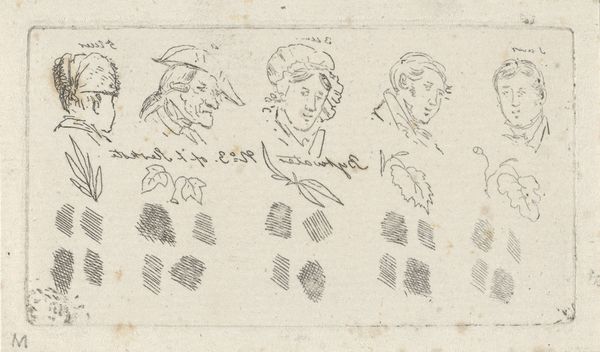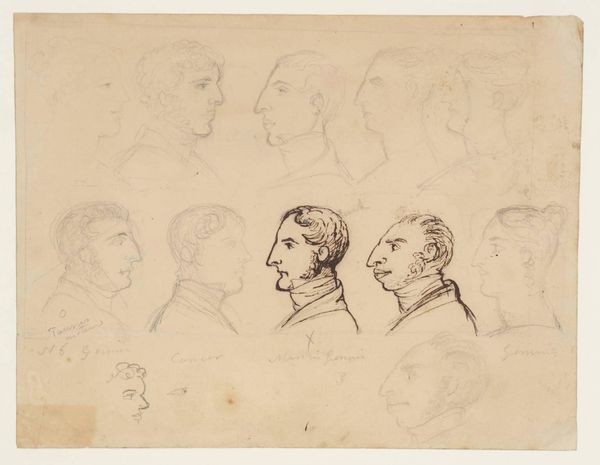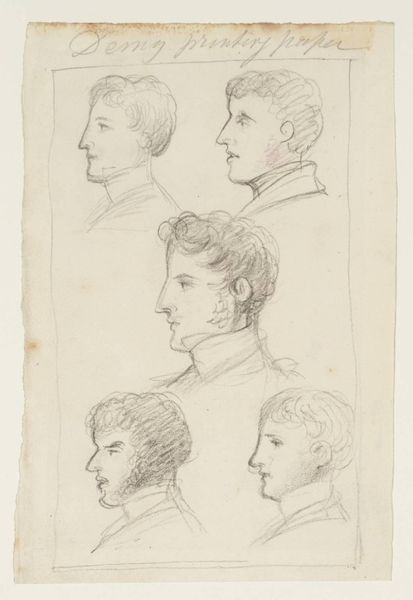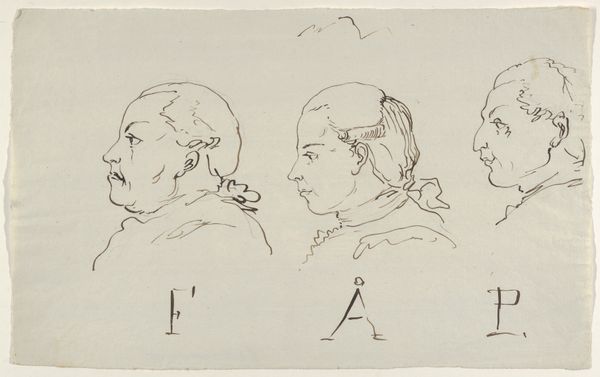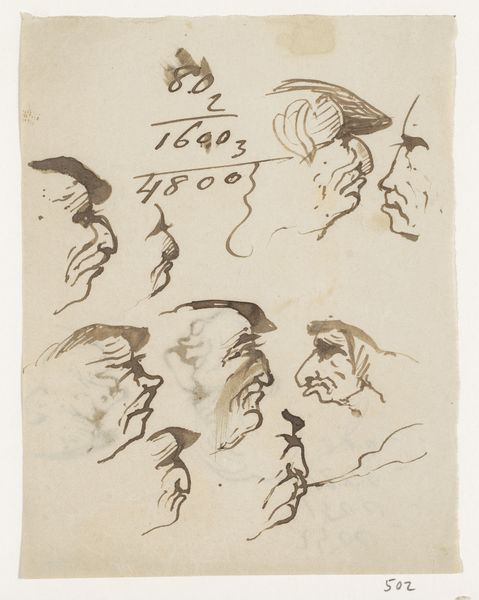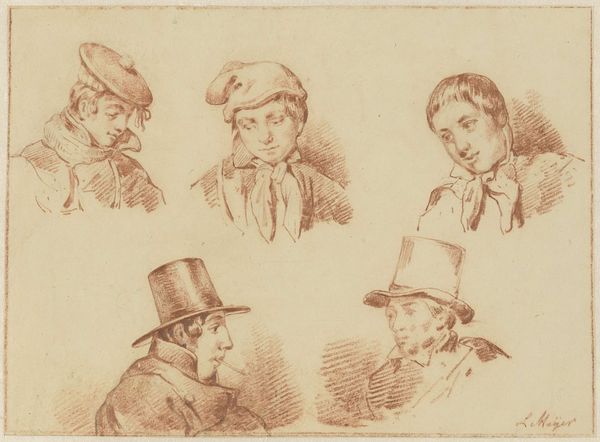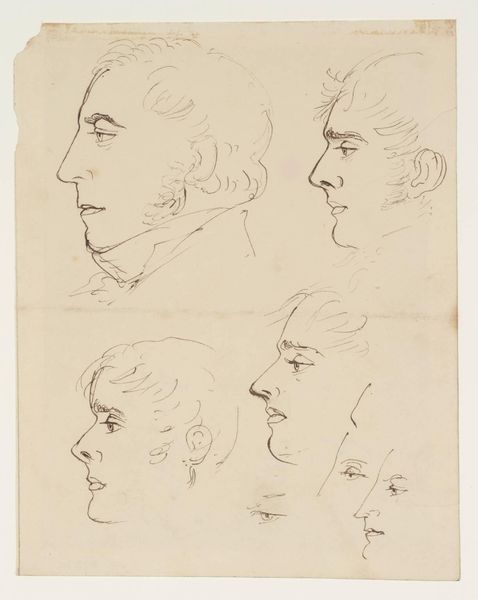
drawing, ink
#
portrait
#
drawing
#
comic strip sketch
#
pen sketch
#
personal sketchbook
#
ink
#
sketchwork
#
pen-ink sketch
#
line
#
pen work
#
sketchbook drawing
#
storyboard and sketchbook work
#
academic-art
#
sketchbook art
#
initial sketch
Dimensions: height 46 mm, width 83 mm
Copyright: Rijks Museum: Open Domain
Curator: Let’s consider this study sheet by Anthonie Willem Hendrik Nolthenius de Man, created sometime between 1803 and 1842. It appears to be ink on paper. Editor: My initial impression is that it’s a collection of faces in profile, giving off a very immediate and raw, process-oriented feeling. You get the sense of the artist practicing a skill. Curator: Indeed. If you look closely, the hatching technique suggests a process of layering, of building up the forms. This isn't just a portrait, but also an investigation of light, shadow, and the properties of ink itself. Editor: Absolutely. And each figure is slightly different, maybe even alluding to specific temperaments through posture and hair style. Profiles, since antiquity, carry symbolic power. Here it seems like we are looking at studies of authority or possibly class distinctions in some way. Curator: I would venture that this kind of work reflects academic artistic production. In terms of class, look at the labor implied by the creation of art, even in this simple sketch, compared to the imagined labor of the subjects. This material reality really reframes any perceived power dynamics suggested by profile and so on. Editor: Perhaps the artist intentionally blurred those lines. Note that they seem deliberately detached. Consider that each one is numbered. To me, this calls up something of the way a dramatist or playwright works, imagining distinct roles for actors on a stage, where even simple staging and sketches evoke deeper, symbolic contexts. Curator: Well, by investigating this sketch we are witnessing something. How artists hone their craft has real socioeconomic consequence. Editor: Precisely, it goes both ways! By noting forms, shapes and historical symbols one also notices intention, skill and creative processes that reflect wider culture in very profound ways.
Comments
No comments
Be the first to comment and join the conversation on the ultimate creative platform.

